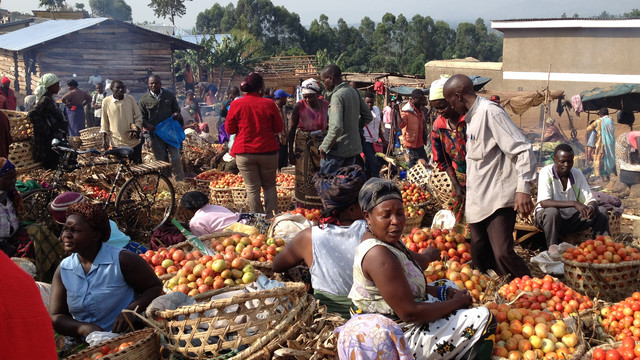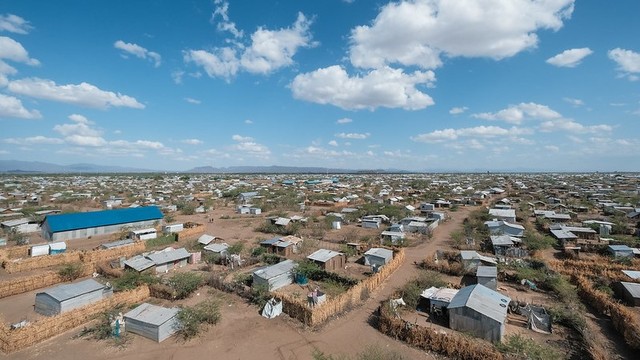Protecting land and community resources in Africa
Nine key lessons for working with communities whose indigenous land rights and resource rights are under threat.


A woman explains the importance of guarding against future encroachments on her community's common land in Northern Uganda (Photo: LEMU)
Rural communities across Africa face a variety of threats to their claims to customary and indigenous land and natural resources, from increasing foreign investment through to speculation by national elites, rising population densities, climate change, and national infrastructure mega-projects.
For the practitioners and advocates working to support these communities, there is clearly no silver bullet. Instead they must draw on a range of experience and expertise.
The NGOs Namati and Natural Justice brought together experts to consider these issues. The results are published in a new book of 18 case studies. Here I highlight nine of the key lessons we learned.
Lessons learned
- Involve all community members, and recognise that communities are diverse and that different stakeholder groups may have conflicting interests.
- Remember that leaders' interests may differ from community members' interests. This means building direct connections with community members – not only leaders – to ensure that continued community support is possible even when leaders act against community interests.
- Build critical mass around a unified community future vision to challenge outsiders' "divide and conquer" efforts. For example, in Kenya the NGO Save Lamu has brought together a large number of different indigenous and incoming settler communities to campaign with one voice in the face of the US$26 billion Lamu Port South Sudan-Ethiopia-Transport (LAPSSET) mega infrastructure project.
In the face of some inter-community violence, Save Lamu has supported the development of a Biocultural Community Protocol, uniting 45 villages encompassing various cultural and ethnic backgrounds to collect the communities' own ideas of development.
- Build on community members' existing expertise and skills and strengthen the community's capacity to speak out for themselves for their land and natural resource rights. Community members are generally "experts" on their lands and natural resources, so when formulating an advocacy strategy, make good use of the community's existing skills, assets, knowledge and resources.
In Nambia, Integrated Rural Development and Nature Conservation supported elders in the Khwe San community to use their traditional knowledge and skills to create an ecological wildlife tracker training project in the Bwabwata National Park. The Traditional Environmental Knowledge Outreach Academy (TEKOA) provides skills, employment opportunities and strengthens community monitoring of natural resources within the park.
- Take advantage of community land protection efforts to strengthen local governance. Drafting and formally adopting community by-laws to help manage the resource and electing a representative, diverse land governing body can significantly strengthen local land and natural resource governance.
The Land and Equity Movement in Uganda (LEMU) was able to resolve a long-standing land encroachment case in the Kitwe community by involving the Resident District Commissioner and District Police Commander. However LEMU has learned that without community-agreed rules and management structures in place, any dispute resolution is temporary at best.
LEMU is working with Kitwe to address governance gaps, challenging community members to channel their frustration into a process of drafting a comprehensive set of rules, and electing a representative committee to govern the communal land.
- Ensure that communities understand the benefits and costs of any proposed investment. To ensure that communities make informed decisions about whether to share their lands with an investor, they need to understand the benefits of conserving their natural resources as compared to the promised financial payoff of selling or leasing their land to investors.
- Work closely with government representatives to build their understanding and support. Government agencies are not monolithic – advocates can often find ministers and high-level administrators who will support community rights.
For example, the Zimbabwe Environmental Law Association (ZELA) adopted a multi-pronged approach to the displacement of 4,300 families in the community of Marange by diamond mining operations. ZELA worked with members of parliament from resource rich areas to strengthen their capacity to represent the rights and interest of their constituencies with respect to resource governance. It also strengthens the legislative and oversight roles of legislators in the natural resources sector.
Legislators within the Parliamentary Portfolio on Mines and Energy became key allies in trying to expose the rights violations in Marange. This is despite the legislators coming from different political parties, including the ruling party.
- Make use of the media and use it to ensure that all voices are heard. Target print, radio and social media to spread messages out to the wider region, nation and world. Call for others' support. Make sure that the voices of women, youth and elders are included.
- Link community land protection efforts to wider networks for support by forming strong networks of like-minded organisations and individuals (at the local, national and international levels).
Community sharing
Frontline advocates around the world urgently need to share their community land protection strategies and learn from one another's successes and mistakes.
The struggles and victories of an individual organisation or community can at times feel overshadowed by influential opponents and daunting global trends.
But when taken together, individual stories of creativity, unity, courage, and solidarity coalesce into their own trend – a stirring, alternative narrative of hope, justice, and the power of collective action.
Rachael Knight (rachaelknight@namati.org) is director of the Community Land Protection Program at Namati, a global NGO working on grassroots justice.
More resources on lessons around legal empowerment
Around the world, citizens' groups are taking action to change the way investments in natural resources are happening, to protect the rights of citizens and the environment for a fairer and more sustainable world. The Legal Tools for Citizen Empowerment initiative shares tools and tactics among practitioners
Legal empowerment in practice. Using legal tools to secure land rights in Africa, Lorenzo Cotula, Paul Mathieu (2008), IIED Report
Public interest litigation as an empowerment tool: the case of the Chiadzwa Community Development Trust and diamond mining in Zimbabwe, Mutuso Dhliwayo (2013), IIED Report



